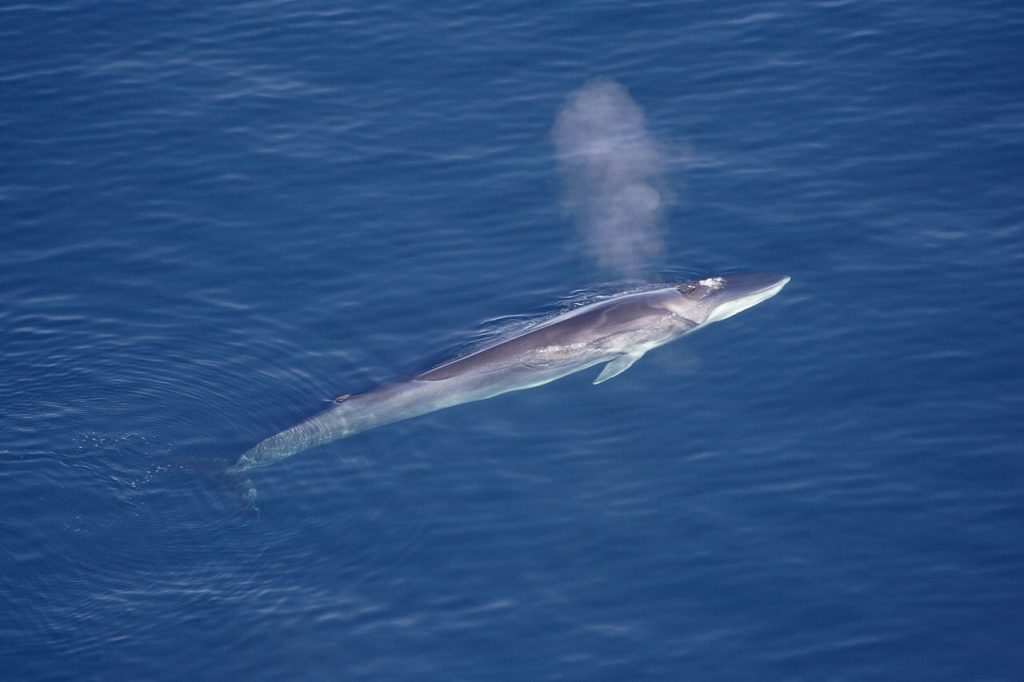
STATUS
Federal: Endangered
POPULATION TREND
+ Increasing
RESTORATION
Difficult
FAMILY
Balaenopteridae, a group of baleen whales
RANGE
All major oceans
Appearance
The fin whale is the second-largest species on earth, after the blue whale. Its large size makes it easy to identify: adults are an average of 20 meters long, but may reach up to 27 meters. Fin whales have a long and slender body, allowing it to be an extremely efficient and fast swimmer. Fin whales are usually brown or light gray. They have a vertical narrow spout that can reach up to 6 meters in height.
Habitat & Behavior
They are most common in temperate and cooler waters, where they feed on small schooling fish, squid, and copepods and krill. They tend to breed in open waters, but will migrate along coastlines (though rarely in water less than 200 meters deep).
Threats
Like all other major whale species, the fin whale was hunted heavily in the 19th and 20th centuries. Currently, major sources of fin whale mortality include ship collisions, entanglement in fishing gear, overfishing, and ocean noise cause by humans.
Conservation
The global fin whale population has roughly doubled since the 1970s following international bans on commercial whaling. Conserving habitats such as Marine Protected Areas has proven effective in protecting the species, as well as mitigating obstacles to its migratory patterns.
About this Map
This map is based on summer and fall sightings of fin whales. The sightings were recorded during ship surveys and used to build a habitat model that shows approximate whale density, or the number of individual animals that scientists have predicted should occur per square kilometer of ocean. Only the Western U.S. portion of the whale’s distribution is shown here. The model was developed by Dr. Elizabeth Becker and her team (a link to her paper and the data is under Data Sources below).
Where can you spot it?
Fin whales can be seen almost year-round in Southern California. During the summer, they are often seen feeding alongside blue whales.
Data source: Fin whale habitat based density model from Becker et al. (2016) in Remote Sensing, 8(2), accessed via CetSound
Acknowledgements: We would like to thank Elizabeth Becker for generously sharing the fin whale distribution data.
References: